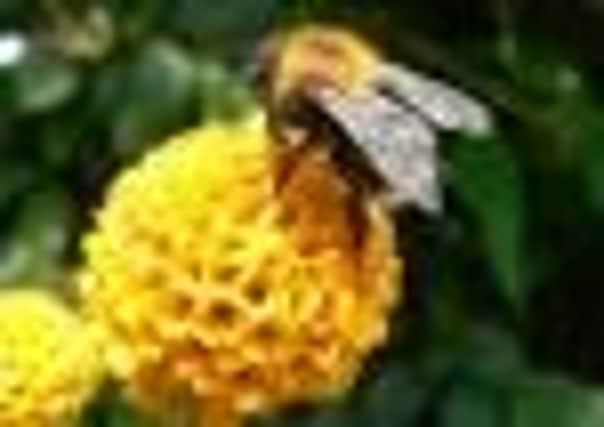Country & Coast: The new bee in town – and the garden – has everyone abuzz


These have been taking over blue tit nest boxes and nesting in house walls, and I set out to discover what the all fuss was about.
The answer was that we have a new bee in town, or, to be more precise, the Tree Bumblebee has arrived in Yorkshire.
Advertisement
Hide AdAdvertisement
Hide AdIn 2001, in southern England, the bumblebee experts were excited to find a new species colonising Britain.
Since then, the Tree Bumblebee has been spreading north. What’s more, this particular bumblebee has some quite unusual habits, which make it rather distinctive and bring it to people’s attention. Indeed, its behaviour has led to lots of correspondence by post, emails and telephone.
First, they often nest in bird boxes and holes in trees or walls, and so are frequently found in gardens.
Their tendency to nest in holes in buildings makes them very conspicuous – so, for example, I have a nest in a tiled wall outside my bathroom.
Advertisement
Hide AdAdvertisement
Hide AdHowever, there is another phenomenon that cropped up this year, when a cloud of males could be seen ‘dancing’ at the entrance to a nest.
These males, from other nests close by, were hanging around hoping to pounce on a virgin queen when she emerged.
Apart from the behaviour, how do you recognise the Tree Bumblebee?
It is a distinctive bumblebee with a brown thorax, black abdomen, and white tail. If you see this pattern, with a clear white tail, then you have a Tree Bumblebee.
Advertisement
Hide AdAdvertisement
Hide AdThe workers are about one centimetre long and the queens about two centimetres.
And, of course like all the bumblebees, they are very docile and not a problem at all.
With declines in honeybees, the bumbles do a vital job of pollinating fruit and other crops.
The progress of this species is being monitored throughout the country, so the colonisation of Yorkshire is of particular interest.
Advertisement
Hide AdAdvertisement
Hide AdSend your records to the Bumblebee Conservation Trust at the School of Biological & Environmental Sciences, University of Stirling, Stirling FK9 4LA, or email: [email protected]
They also have a wonderful web site at http://www.bumblebeeconservation.org.uk .
This has lots of information on bumblebees, their conservation, and, usefully, how to identify them.
Ian Rotherham is a writer, broadcaster, Professor of Environmental Geography and Reader in Tourism and Environmental Change at Sheffield Hallam University.